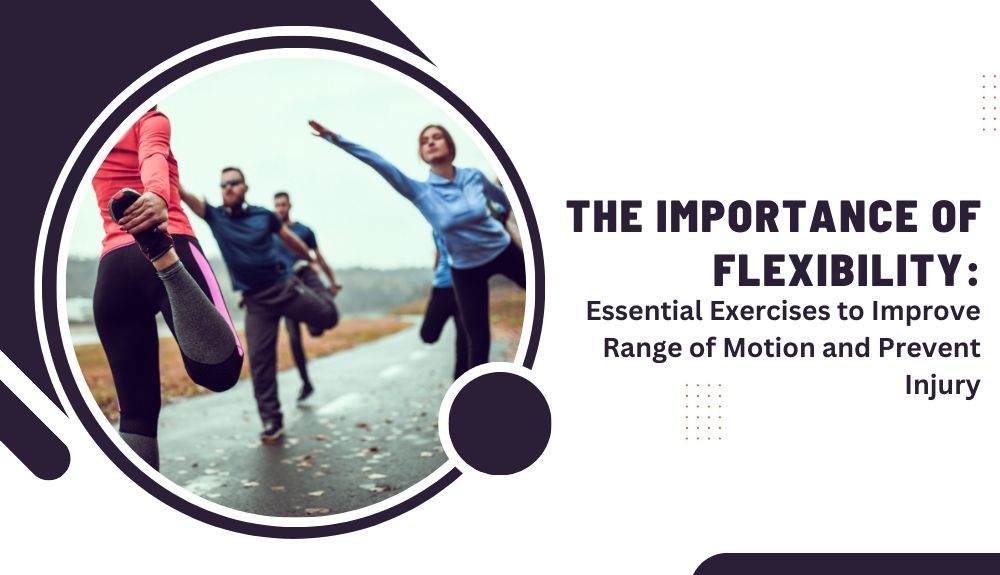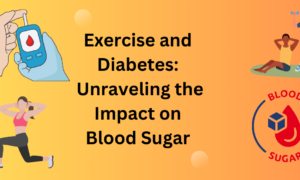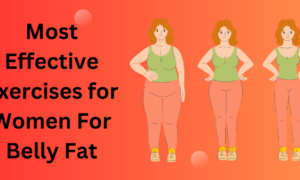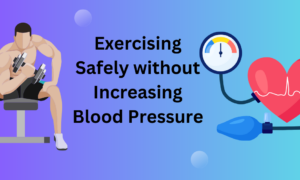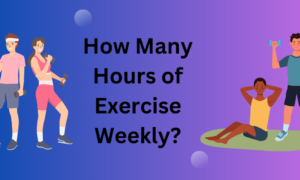Are you feeling stiff and achy? It might be time to limber up and embrace the importance of flexibility! Flexibility isn’t just about touching your toes; it’s a key player in keeping your body moving smoothly and preventing injury. So, let’s dive into why flexibility matters, how to improve it, and some essential exercises to get you bending and stretching like never before. Let’s flex those muscles and unlock a world of movement potential!
Why Maintaining Range of Motion is Crucial for Overall Health
Having a good range of motion is essential for overall health. It allows you to move freely without restrictions, which is vital for daily activities and exercise. When your joints can move through their full range, it helps prevent stiffness and reduces the risk of injury.
Maintaining flexibility also contributes to better posture and alignment, reducing the strain on muscles and joints. This can help alleviate aches and pains associated with poor movement patterns. Additionally, improved range of motion enhances athletic performance by allowing for more efficient movements during workouts or sports activities.
Flexibility training not only benefits physical health but also mental well-being. Stretching releases tension in the body, promoting relaxation and stress relief. It can improve circulation, leading to better nutrient delivery to tissues and faster recovery after workouts.
Incorporating regular stretching into your routine can have long-term benefits for your overall health and quality of life. So don’t overlook the importance of maintaining good range of motion – your body will thank you for it!
Common Causes of Poor Flexibility and Restricted Movement
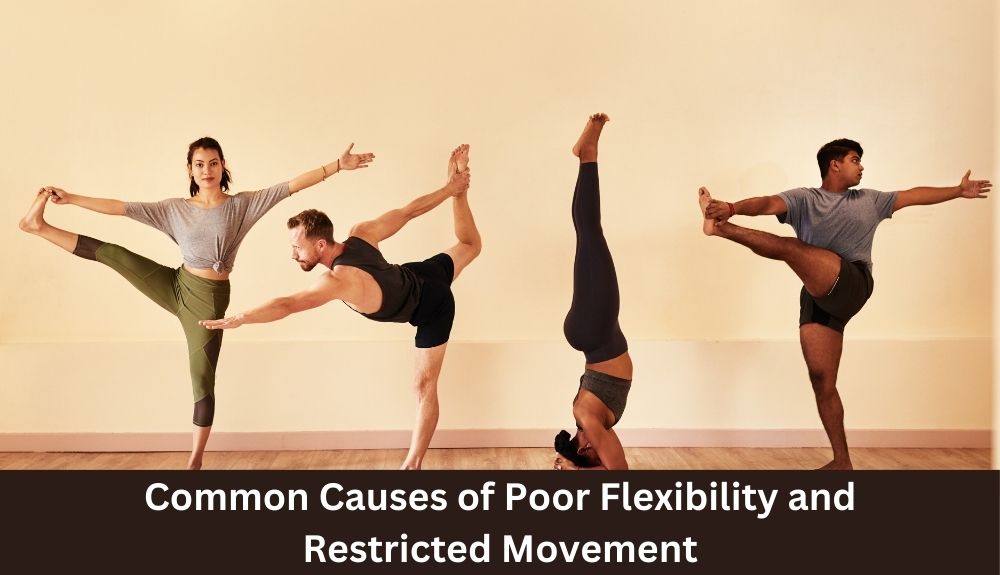
When it comes to poor flexibility and restricted movement, there are several common culprits that may be holding you back. One major factor is a sedentary lifestyle – sitting for extended periods can cause tightness in muscles and joints. Lack of regular exercise or stretching can also contribute to decreased flexibility over time.
Another key reason for limited range of motion is muscle imbalances. When certain muscles are stronger than others, it can lead to tension and stiffness that restrict movement. Additionally, past injuries or surgeries may result in scar tissue formation, which can further limit flexibility.
Poor posture is yet another culprit when it comes to reduced flexibility. Slouching or hunching over frequently can cause tightness in the chest, shoulders, and hips. Age plays a role as our bodies naturally lose elasticity as we grow older.
By identifying these common causes of poor flexibility, you can take steps to address them and improve your overall range of motion for better health and mobility.
Essential Exercises to Improve Flexibility in Different Areas of the Body
Improving flexibility in different areas of the body is key to enhancing overall mobility and preventing injuries. When it comes to the neck and shoulders, gentle neck rolls, shoulder shrugs, and side stretches can help release tension and increase range of motion. These exercises are simple yet effective in improving flexibility in this area.
For the spine and core, incorporate exercises like cat-cow stretch, spinal twists, and planks into your routine. These movements not only enhance flexibility but also strengthen the core muscles for better stability. Prioritizing these exercises can lead to a more resilient spine and improved posture over time.
When focusing on the hips and legs, stretches such as lunges, hamstring stretches, and hip flexor stretches are essential. By regularly practicing these exercises, you can loosen tight muscles in the lower body and improve overall flexibility for activities like running or squatting.
Remember that consistency is key when it comes to improving flexibility in different areas of your body. Incorporate these essential exercises into your workout routine to experience noticeable improvements in range of motion over time.
– Neck and Shoulders
Our neck and shoulders often bear the brunt of our daily activities, leading to stiffness and discomfort. To improve flexibility in these areas, incorporating targeted exercises is essential. Start by gently rolling your neck from side to side, then add gentle stretches like tilting your head towards each shoulder.
For the shoulders, arm circles and shoulder shrugs can help loosen tight muscles. Incorporating yoga poses like Cow Face Arms or Eagle Arms can also enhance flexibility in this region. Remember to breathe deeply through each stretch to maximize its effectiveness.
Consistency is key when it comes to improving flexibility in the neck and shoulders. By including these exercises regularly in your routine, you can reduce tension and prevent future injuries. So take a moment each day to show some love to your upper body – it will thank you with greater mobility and comfort!
– Spine and Core
When it comes to flexibility, focusing on your spine and core is key. These areas play a crucial role in maintaining proper posture and overall strength. A flexible spine can help prevent back pain and improve mobility, while a strong core provides stability for daily movements.
To enhance flexibility in your spine, incorporate exercises like cat-cow stretches or spinal twists into your routine. These movements can help alleviate tension and increase range of motion. Strengthening your core with planks, Russian twists, or bicycle crunches not only supports your back but also improves balance and coordination.
Remember to listen to your body during these exercises – never force a stretch or movement that causes pain. Slowly progress as you build strength and flexibility in your spine and core muscles. Consistency is key when it comes to seeing improvements in these areas over time.
– Hips and Legs
When it comes to flexibility, your hips and legs play a crucial role in your overall movement and performance. Tightness in these areas can lead to discomfort, limited range of motion, and increased risk of injury.
To improve flexibility in your hips and legs, incorporate stretches like hip flexor stretches, hamstring stretches, quad stretches, and inner thigh stretches into your routine. These exercises target key muscles that often become tight due to prolonged sitting or physical activity.
Yoga poses such as pigeon pose or lizard pose can also help open up the hips and increase flexibility. Additionally, foam rolling the IT band and glutes can release tension in the muscles surrounding the hips for improved mobility.
Remember to listen to your body’s cues during stretching sessions – never force yourself into a stretch that causes pain. Consistent practice will gradually increase flexibility in your hips and legs over time.
Stretching Techniques for Maximum Results
When it comes to maximizing your flexibility, incorporating effective stretching techniques is key. One method to enhance your range of motion is dynamic stretching, which involves moving a joint through its full range in a controlled manner. This type of stretching helps improve blood flow and warm up the muscles before activity.
Another great technique is static stretching, where you hold a stretch for 15-30 seconds without bouncing. This can help elongate the muscle fibers and increase overall flexibility over time. It’s essential to focus on proper form during each stretch to avoid injury and ensure maximum benefit.
Foam rolling is another fantastic tool to add to your routine. Using a foam roller helps release tension in tight muscles and improve circulation, aiding in recovery and enhancing flexibility. Remember to breathe deeply while stretching to oxygenate the muscles and deepen the stretch.
Incorporating these various stretching techniques into your regular routine can help you achieve maximum results when it comes to improving flexibility and preventing injuries long term.
Incorporating Flexibility Training into Your Workout Routine

Are you looking to take your fitness routine to the next level? Incorporating flexibility training into your workout regimen can be a game-changer. Not only does it help improve your range of motion, but it also plays a crucial role in preventing injuries.
Adding dynamic stretches like leg swings or arm circles before your workout can help warm up your muscles and prepare them for activity. Static stretches at the end of your session can aid in cooling down and improving flexibility over time.
Consider integrating yoga or Pilates classes into your weekly schedule to focus on both strength and flexibility. These practices not only enhance muscle tone but also promote relaxation and stress relief.
Remember, consistency is key when it comes to seeing results. Dedicate time each week specifically for stretching exercises to reap the benefits of increased flexibility in no time!
Preventing Injuries through Regular Flexibility Work
By incorporating regular flexibility work into your fitness routine, you can significantly reduce the risk of injuries. Flexibility training helps to improve joint mobility, muscle elasticity, and overall range of motion, which are all essential for preventing strains, sprains, and other common workout-related injuries.
Remember that flexibility is not just about touching your toes or doing the splits; it’s about maintaining a healthy level of mobility in all areas of your body. By dedicating time to stretching and flexibility exercises regularly, you can keep your muscles supple and resilient, allowing them to move more freely without strain or tension.
So next time you hit the gym or go for a run, don’t skip out on your stretching routine. Your future self will thank you for taking care of your body today through regular flexibility work. Stay flexible, stay injury-free!

